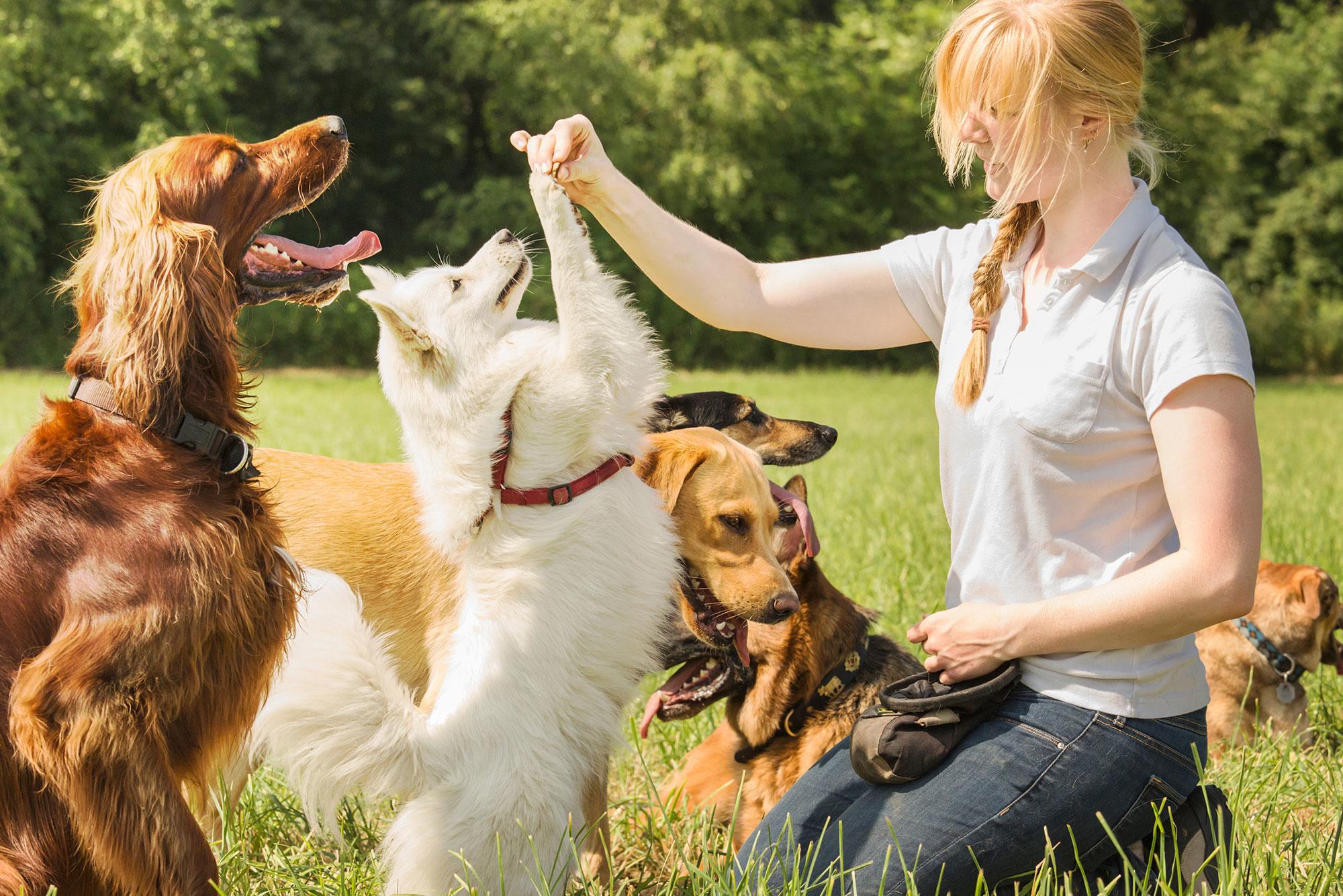The Advantages of a Board and Train Program for Busy Dog Owners
The Advantages of a Board and Train Program for Busy Dog Owners
Blog Article
Explore the Different Kinds of Pet Training Available for Your Furry Good Friend
Recognizing the different types of canine training is vital for boosting your canine buddy's actions and promoting a stronger bond. From fundamental obedience to innovative strategies such as dexterity and fragrance work, each training technique supplies unique advantages customized to both the pet's and proprietor's demands.
Basic Obedience Training
Basic obedience training lays the structure for a well-behaved pet, establishing the phase for an unified relationship between pet dog and owner. This crucial training concentrates on teaching dogs fundamental commands such as sit, stay, come, down, and heel. These commands not just improve interaction but also promote safety and security in various atmospheres.
The training process normally starts with favorable reinforcement strategies, where benefits such as treats or appreciation are offered when the pet dog successfully follows a command. This technique urges a favorable understanding atmosphere, ultimately promoting trust fund between the proprietor and the canine. Consistency is essential; routine technique makes sure that the pet dog retains commands in time.
Furthermore, fundamental obedience training helps to address usual behavioral problems, such as jumping, barking, or pulling on the chain. By establishing clear limits and assumptions, owners can minimize unwanted behaviors and enhance their pet dog's socialization skills.

Advanced Training Methods
Advanced training methods build on the fundamental skills established in basic obedience training, offering a pathway to boost a pet's capacities and responsiveness. These techniques typically include specialized commands and abilities, allowing pet dogs to perform jobs that require greater degrees of concentration and intelligence.
One preferred technique is agility training, where pet dogs browse challenge courses, improving their physical coordination and psychological intensity. This not only offers workout but also enhances the bond between pet and handler through team effort and interaction.
Another innovative method is scent job, which use a pet dog's all-natural olfactory abilities. This training motivates pet dogs to recognize and situate specific fragrances, enhancing their focus and analytical skills. Such activities can be especially advantageous for types predisposed to monitoring.
Service pet training is one more important location, where dogs find out to assist people with disabilities. This training requires a high degree of obedience and specialized abilities customized to the specific requirements of their handlers.
Therapy Approaches
Efficient dog training extends past educating abilities and commands; it additionally includes therapy techniques that address undesirable actions. These strategies are necessary for remedying problems such as hostility, extreme barking, and separation anxiousness, making sure a harmonious connection between pet dogs and their proprietors.
One extensively acknowledged method declares reinforcement, which involves rewarding wanted behaviors to urge their reappearance. This technique works in strengthening good routines while reducing anxiety or anxiety in the dog. Alternatively, aversive techniques, such as penalty or unfavorable reinforcement, are usually prevented by experts as a result of their prospective to produce fear and anxiety, leading to additional behavior issues.
Another vital technique is desensitization, which progressively exposes dogs to the stimuli that prompt unwanted actions in a controlled fashion. This procedure aids dogs discover to stay tranquil and composed in circumstances that would commonly cause anxiousness or hostility.
Counter-conditioning is commonly used in conjunction with desensitization, where the pet dog finds out to connect favorable experiences with previously negative stimuli. Both techniques need perseverance and consistency, making them efficient devices for achieving resilient behavioral adjustment. By using these habits adjustment techniques, animal proprietors can promote a well-adjusted and delighted canine companion.
Specialized Training Programs
In the realm of pet dog training, specialized training programs satisfy particular needs and objectives, supplying tailored methods that boost a pet dog's capabilities and address unique challenges. These programs are designed for different objectives, consisting of service dog training, therapy canine prep work, and even competitive sports training.
Solution pet training focuses on outfitting pet dogs with the skills needed to aid people with disabilities, such as assisting aesthetically impaired owners or notifying to clinical emergency situations. This training is extensive and often calls for a combination of obedience, socializing, and particular task-oriented abilities.
Treatment dog programs aim to prepare pets for emotional support roles in medical facilities, institutions, and nursing homes. These pet dogs must display peace, sociability, and a gentle demeanor, ensuring they can offer comfort to those in distress.
Additionally, affordable sports training, such as dexterity or obedience tests, emphasizes physical conditioning, precision, and synergy in between the pet dog and handler. These programs demand a high degree of commitment and practice, cultivating a strong bond while refining the pet dog's sports abilities.
Fun and Interactive Training Activities
Exactly how can canine training be both the original source productive and delightful? The response pop over to these guys hinges on incorporating enjoyable and interactive training activities that stimulate your canine's mind while strengthening necessary abilities. Engaging your canine with play not just strengthens the bond in between you and your fuzzy friend however likewise improves their knowing experience.
One efficient method to accomplish this is with agility training, where pets browse obstacle courses that test their physical and mental capabilities. This task motivates problem-solving and improves control, making it an excellent choice for energetic types. One more choice is using problem toys that give treats, which can keep your pet mentally encouraged and involved to learn.
Additionally, integrating games like fetch or hide-and-seek can make training sessions extra vibrant. These tasks motivate the pet dog to reply to commands in an enjoyable context, advertising obedience while enabling social communication.

Verdict
In verdict, various types of pet dog training are crucial for boosting canine behavior and cultivating a solid human-animal bond. Checking out these varied training choices outfits dog owners with the devices needed to cultivate well-rounded, happy, and obedient friends.
Recognizing the various kinds of canine training is crucial for improving your canine friend's habits and fostering a stronger bond. From fundamental obedience to innovative methods such as agility and fragrance work, each training method uses one-of-a-kind benefits customized to both the dog's and proprietor's demands.Standard obedience training lays the foundation for a well-behaved pet, setting the stage for a harmonious relationship in between pet dog and web proprietor.The training procedure typically begins with positive reinforcement methods, where incentives such as treats or appreciation are offered when the canine successfully follows a command.In conclusion, various kinds of pet dog training are crucial for enhancing canine actions and promoting a strong human-animal bond.
Report this page